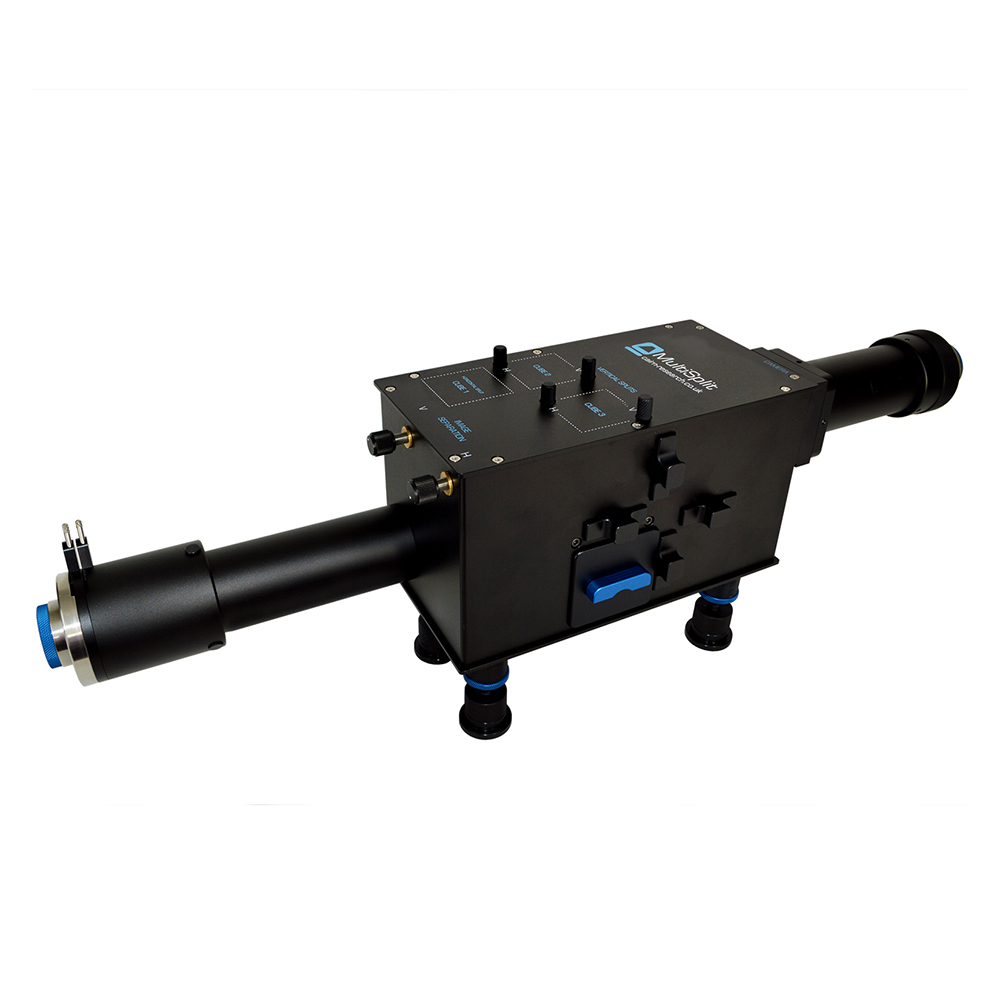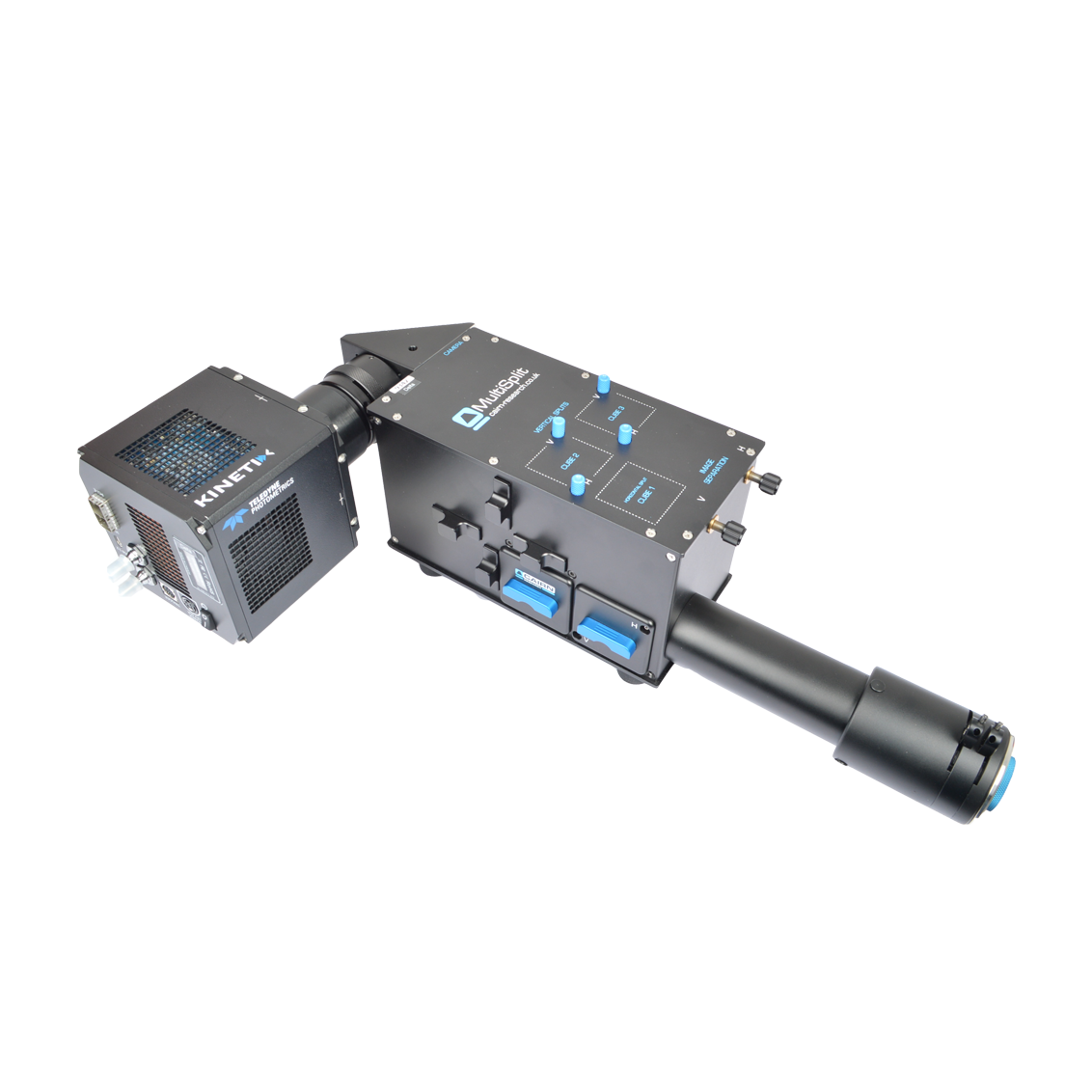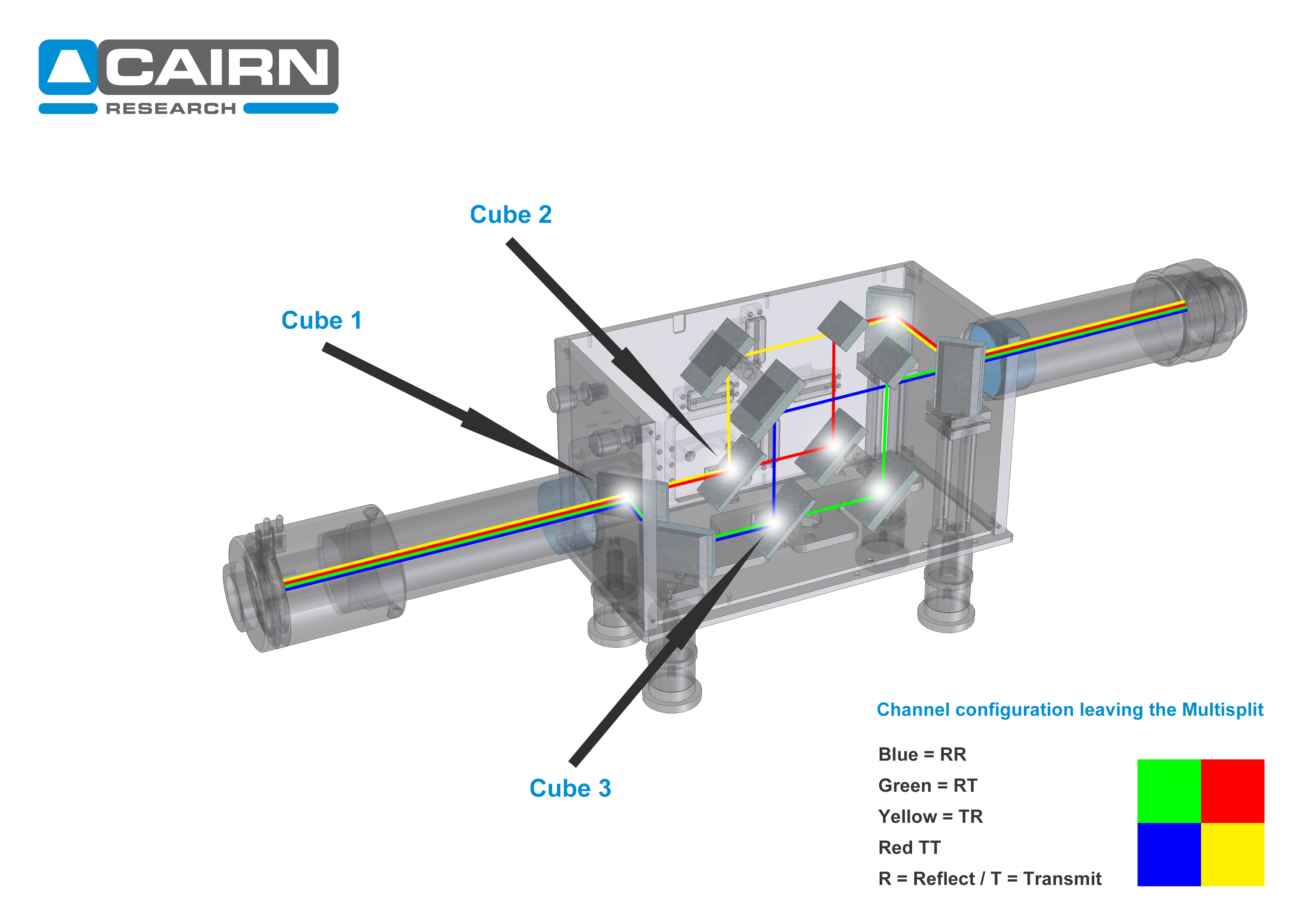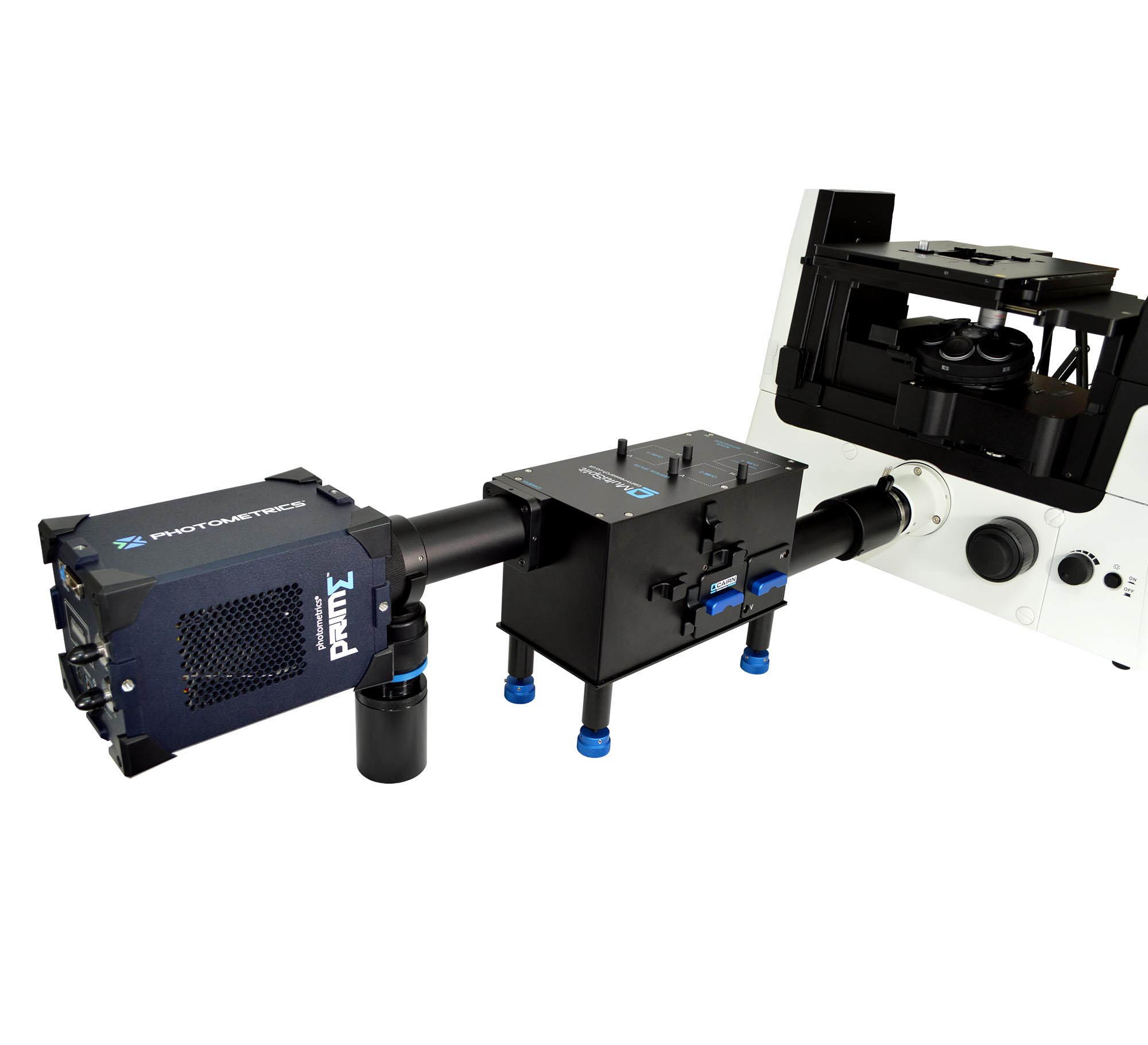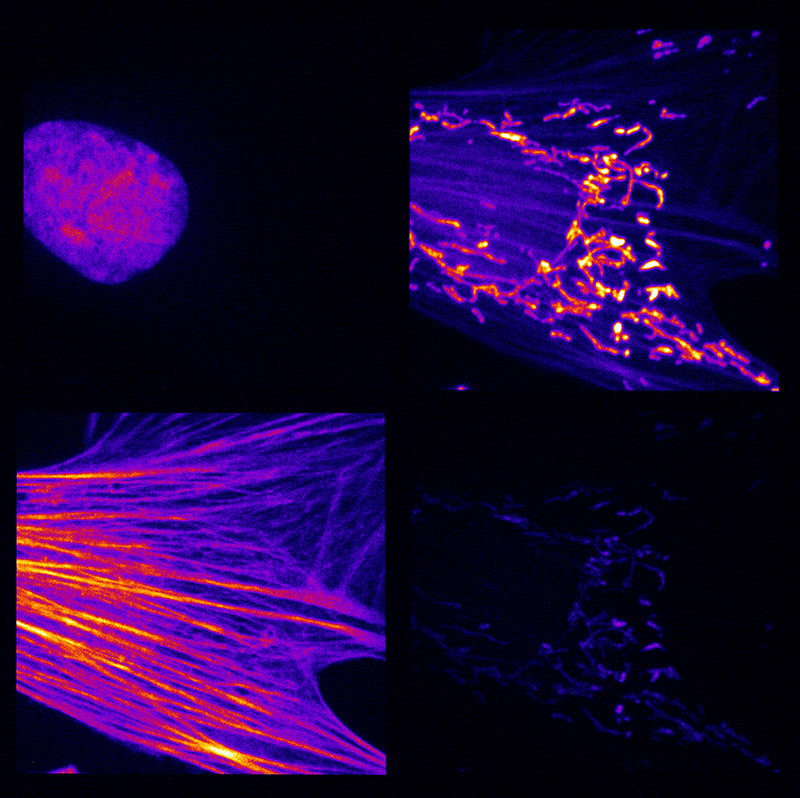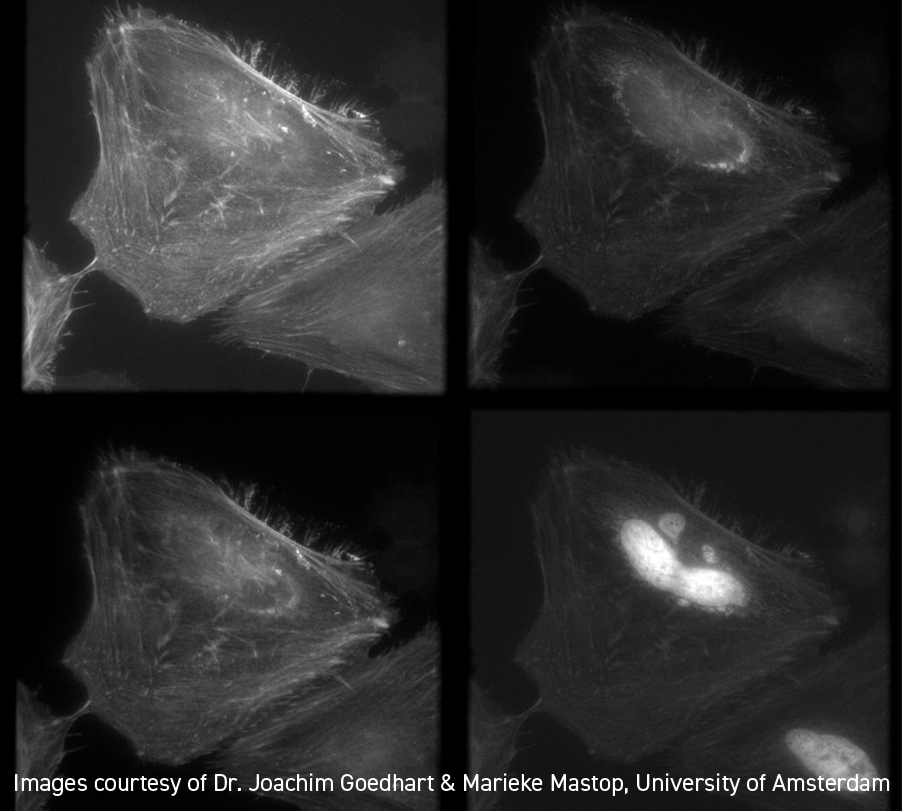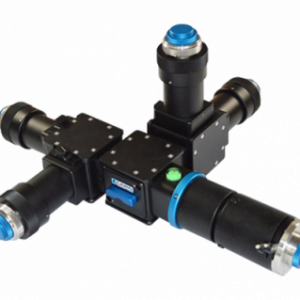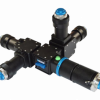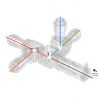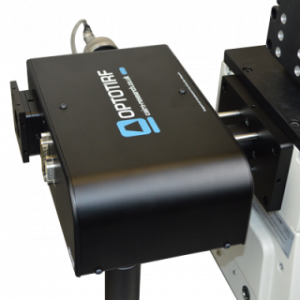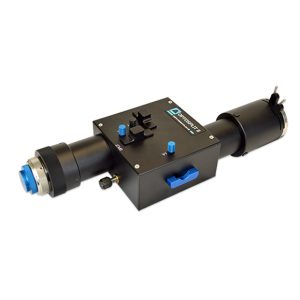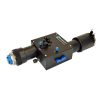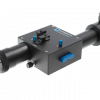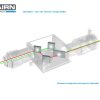
MultiSplit V2
The MultiSplit V2 fourway splitter allows applications where there is a requirement for simultaneous, or high speed, acquisition of multiple emission bands or polarization states. The simultaneous acquisition of these images offers a major benefit over manual or electronic filter changers, as there is no need to pause acquisition while the filter position is changed. This allows your camera to be operated in a fast streaming mode.
Now we are four! Our OptoSplit and OptoSplit Bypass two-way image splitters and their TripleSplit (OptoSplit III) threeway cousin are now at last joined by our MultiSplit V2 fourway splitter. While a fourway design poses a greater technical challenge, which is why it took us a little longer to develop, it is potentially a very attractive product from a user point of view, as the four images are in a 2×2 square format rather than the linear rectangular one that the other splitters in our family generate. Furthermore, the continuing improvements in camera technology potentially allow the individual images to be acquired at megapixel resolution, which makes this form of image capture an increasingly viable alternative to the multiple camera approach, although of course we can also support that method if you prefer!
Just as with the other splitters in the Cairn family, the splitting can be performed on the basis of wavelength or polarization, allowing applications where there is a requirement for simultaneous, or high speed, acquisition of multiple emission bands or polarization states. The optical pathway is first split into two, and each of these pathways is then independently split a second time before refocusing to generate the four images. The simultaneous acquisition of these images offers a major benefit over manual or electronic filter changers, as there is no need to pause acquisition while the filter position is changed. This allows your camera to be operated in a fast streaming mode.
Multi-depth imaging
With the MultiSplit V2 the further possibility of simultaneous multidepth imaging is particularly attractive, as we can now do this at four depths rather than just two or three. In this application the splitting itself is on a neutral basis, but corrector lenses in the individual channels cause the focus to be at a different depth in the sample for each one, allowing the simultaneous acquisition of a four-channel “mini-z” stack.
Whilst optimized for coupling to a scientific microscope, the MultiSplit V2 can also be used with camera lenses or any other system of lenses which produce an image plane of suitable size and f/number (again please ask for details).
| Standard Spectral Range | 425 nm – 875 nm |
| Operating modes | Two Way Splitview
Four Way Splitview Full field bypass |
| Emission filter size | 25 mm |
| Dichroic mirror size | 25.5 mm x 36.0 mm
or 26.0 mm x 38.0 mm 2.0 mm thick UltraFlat dichroics highly recommended |
| Camera size supported | Up to 32 mm diagonal |
- Compact design with integral C-mount input and output ports as standard (F and T mount on request)
- Support for sensors up to 32mm diagonal (split mode only)
- Budget friendly alternative to four cameras
- 425nm to 875nm AR coatings on all optical surfaces
- 40mm diameter proprietary optics
- Simple & precise controls for image registration
- Magnetic cube mount for enhanced registration
- Interchangeable filter / dichroic holders
- Emission filter dimensions – 25mm diameter
- Recommended dichroic dimensions – 26x38x2mm (lambda/2 flatness)
- Angled and flat auxiliary drop-in holders for 25mm ND filters and chromatic correction lenses (1 inch on request)
- 1x magnification available as standard
- Optional polarization splitting kit including beamsplitter cube and rotatable polarizer
- Central adjustable rectangular diaphragm for user defined field of view
- Improved camera clamps for enhanced rigidity
- Ratiometric calcium, voltage & pH imaging
- Förster Resonance Energy Transfer (FRET)
- Simultaneous multi fluorescent probe imaging
- Polarization studies (anisotropy)
- Simultaneous phase contrast / DIC and fluorescence
- Simultaneous multi Z depth imaging
- Total Internal Reflection Fluorescence (TIRF)
- Spinning disk confocal
- Single Plane Illumination Microscopy (SPIM)
- 3D super resolution PALM/STORM (using cylindrical lenses)
Downloadable Documents
Please find links below to relevant downloads for our products.
Related products
-
Cairn
MultiCam LS Image Splitter
Highly flexible image splitter that enables multi-camera, simultaneous multi-channel imaging from a single microscope port
- Supports up to 4 channels of varying polarity, emission wavelength, and depth of focus
- Essential equipment for researchers wanting to push the limits of simultaneous multi-channel imaging
(0 reviews) -
Cairn
OptoSplit II LS Image Splitter
Easy-to-align image splitter that enables a single camera to record images simultaneously at two different emission wavelengths
- User-friendly design requires minimal maintenance and makes alignment simple
- Excellent for use in FRET, TIRF, and spinning disk confocal applications
- Compatible with all major brands of camera, including large sCMOS chips
(0 reviews)



